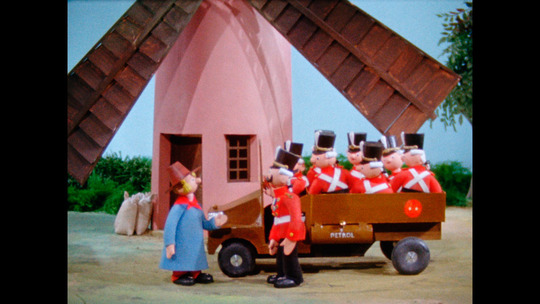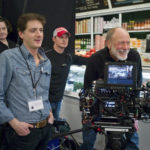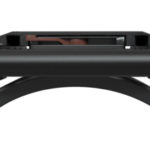
BBC Studios and Post Production breathes new life into Trumptonshire trilogy
Posted on Dec 22, 2011 by Alex Fice
Forget the Twilight trilogy here comes the remastered Trumpton TrilogyFor anyone above a certain age, the towns of Trumpton, Camberwick Green and Chigley, with their weird and wonderful collection of characters, hold a special place in our hearts. Telling the everyday tales of the inhabitants of these imaginary (yet somehow very real) places, the domestic goings-on of Windy Miller, Doctor Mopp, Captain Flack, Peter the Postman, Harry Farthing and the like have enthralled children and parents alike since the 1960s.
A trilogy of groundbreaking, stop-motion animation children’s BBC TV shows – one of the first ever British TV series to be filmed in colour – they were the brainchild of its multi-talented writer and producer, Gordon Murray. They first came to our screens way back in 1966, and their characters were expertly voiced with the dulcet tones of Brian Cant. Bob Bura, John Hardwick and Pasquale Ferrari brought the characters to life visually through revolutionary full colour animation.
But whatever happened to this famous cast – including the unforgettable fire crew of Pugh, Pugh, Barney McGrew, Cuthbert, Dibble and Grub – immortalised by these 1960s children’s cult TV classics in ye olde Trumptonshire?
The quest for the lost footage
Like with many old classics, they were presumed consigned to the annals of TV history, never to be seen again. But, in a far-sighted and ambitious move, Murray with the help of his ‘Trumptonshire’ son-in-law William Mollett, decided to locate, restore, and importantly, future-proof and safeguard the trilogy.
“We had no great expectations when we started out the process,” says Mollett. “Even if we did manage to find the original masters, we weren’t holding out much hope for what state they’d be in after nearly 50 years had passed.” Undeterred, Mollett, began his quest. And after finding the original copies stowed away in his father-in-law’s house, he started research to see if it was viable to restore and prepare Camberwick Green, Trumpton and Chigley for distribution and safekeeping.
Finding the hidden treasure containing the original 16mm A and B roll master print copies was absolutely crucial to the success of the project. Indeed, a previous 2005 re-mastered DVD of the trilogy had not delivered the quality the creator was searching for. As Mollett explained, “this DVD wasn’t re-mastered from the original footage but from a tape taken from a telecine of a conformed duplicate in the 1970s.” He pointed out that the footage appeared warped and fuzzy in places, with low resolution and flat colours. “This time we were anxious to get it right – we were very keen to protect the original creative vision that my father-in-law had for the trilogy.”
Finding the original masters was fantastic news. The surprise then got even sweeter. “We were excited to see that the originals had only been duplicated about seven or eight times in their 45-year life-span and generally they were in pretty good condition considering,” recalled Mollett. This meant that much of the integrity of the original programmes would remain intact, so often a challenge when trying to breathe new life into old footage.
Restoring the footage to former glories
The quest led the Trumptonshire duo to BBC Studios and Post Production, and their Digital Media Services Division, which specialises in digitising, restoring and distributing old archive footage – whatever the format, condition and age.
And it quickly became clear the team would have their work cut out to restore all 39 episodes (13 x 15 minute episodes of each series) to their former glory – especially as the team had made the decision to re-scan the footage to high definition for potential Blu-Ray release and to give it the best chance of retaining its picture quality. As some of the original elements were in such poor condition, the team sourced additional material from the BBC Archives library at Perivale to supplement the master footage.
“The scale of the task was enormous, both from a media management and storage point of view. We had to very carefully manage the workflow as we were dealing with massive, fully-uncompressed DPX files so we could view and work on every subtle picture detail,” recalled Clive Hodge, head of digital media services at BBC Studios and Post Production.
Robbie Lava, digital media services coordinator at BBC Studios and Post Production, takes up the story. “The first job after cleaning was to ingest all the A and B roll footage into our SCANITY film scanner so it was in the digital domain. The beauty of the system is that it reproduces every single frame of film exactly like the camera-originated material. This means that we can see every single detail right down to individual scratches and even the film perforation – and squeeze every ounce of quality from the footage. It also meant we could scan in the footage directly without the need for an intermediate duplicate – and as it scans at 18fps, we could push through the job much faster than on other systems.”
The team, guided by the expert eye of colourist Andrew Parkinson and managed by media management expert Sheona Henderson, then passed the footage through its suite of film processing, clean-up, grain reduction and restoration tools – including Nucoda Film Master, Diamant DustBuster, DVS Clipster and Cinnafilm’s Dark Energy.
While generally the overall state of the footage was pretty good – considering the passing of time – there were significant quality variations between different series, episodes and even scenes. Part of the challenge was to ensure that there weren’t wild fluctuations of picture quality and to make sure the overall result had the same consistent look and feel. For instance, Lava pointed out that, “some of the replicated stock scenes such as the firemen sliding down the pole and the signature bandstand were in extremely bad condition. So we had to search for the original stock scene and insert that across all the other episodes to ensure the quality was consistent and optimised throughout.”
Murray also wanted to ensure the footage and all its elements were retained forever – no longer wanting to put his faith in the vagaries of film can storage. So the team backed up and saved everything – scans, HDCam SR tapes, frame-speed corrected files on external drives, LTO back-up and even .wav audio files. They left nothing to chance, as the 16mm originals were only likely to degrade further over time.
The trilogy…reborn
Being able to scan and save the series’ electronically in full HD was a key component to future-proofing them, and also making sure viewers could see in pristine HD detail the true artistry behind the original physical props and puppet-making skills. In addition to the visual re-mastering, the 16mm mag tracks were also dug out from the vaults. This meant the audio also received the same expert digital makeover treatment from the BBC Studios and Post Production team.
The 90-year-old Murray was delighted when he first saw the team’s collective efforts, and as Mollett pointed out “it was heart-warming to see his reaction to the restored footage.” He added: “The stability and clarity of image was better than ever before, and it was clear the guys had squeezed every single ounce of information from the original camera material so it could be viewed in the best possible light.”













